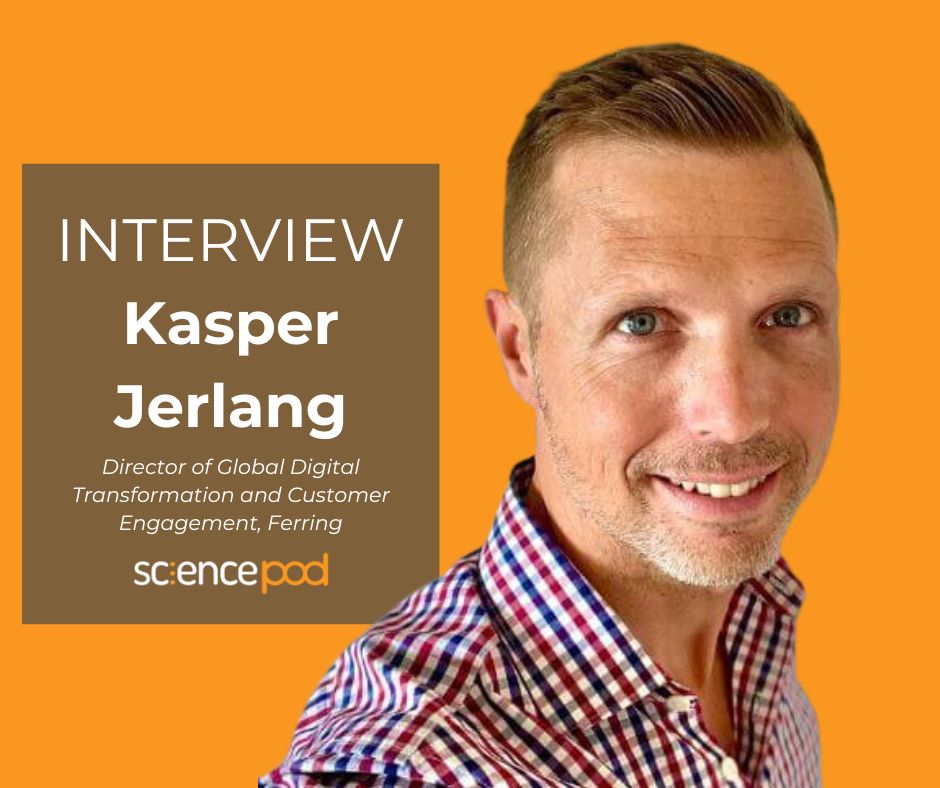Interview with Kasper Jerlang, Director of Global Digital Transformation and Customer Engagement, Ferring.
SciencePOD spoke with Kasper ahead of the NEXT Pharma Summit (Dubrovnik, 16-17 May 12023) where he will be participating in a panel discussion entitled Past, Present, Future – what is the trajectory for digital engagement in Pharma?
One thing is to know where you want to go; this is the mountain peak we are trying to get to, doing all this customer engagement and measuring the impact of it and using AI to do it even better. It’s very important to mention the hard work and the hard decisions that need to be made to get there, that most pharma companies are right in the middle of—trying to make that move from the traditional to the new world.
Kasper Jerlang
What makes a successful customer engagement campaign that brings tangible results?
A great campaign—in my opinion—is co-created with the customer. You contact a KOL or a doctor or a nurse educator or somebody who’s really an expert in their area; then you co-create with them value-added content that either patients can benefit from or that takes doctors and nurses to a new level because they get these insights.
You have the co-creation part and then you have the value-add—which is extremely important. How do you make sure that the campaign is not just dropping off messages but is actually something that is usable for the receiver, for the customer? Something that takes them to a new place, something they can use, something they get value from; that should be the key driver of everything.
What are the most important aspects to consider when developing customer engagement campaigns?
Again, it’s the value. I think if we can offer customers something that adds value, something that they can really use and find beneficial to their job or their function, then we’re onto the right track. Sometimes you know things that they need by having your sales reps talking to customers and harvesting their insights, but it can also be found in the digital world by doing experiments with customers—or ‘growth hacking’ is the fancy word—where you test different types of engagement and content with the customer group and see which one it is that they prefer.
How do you typically measure the impact of your customer engagement campaigns?
There’s been a tendency to use quantitative measures, click-through rates and things like that, or number of visits to a customer, but adding a quality measure is something we’re looking at which I find very, very interesting. We’re looking into how we can implement Net Promoter Score and other quality measures to see if we can have those two—both quality and quantity—as our measure of impact in the digital world. Then, of course, there’s always sales. There are also other ways you can go: look at what’s their awareness level, what’s their advocacy of the product and so on, but that’s more traditional.
As ChatGPT is on everyone’s mind, to what extent are you able to automate some of the content creation for touchpoints as part of your campaigns?
I must say I’m really impressed by ChatGPT. That makes me wonder what it will be able to do in a couple of years. There might be opportunities to use it in a positive way, to use the AI to actually create surprising content. ChatGPT today draws upon existing knowledge and then it combines it in a new way. I don’t think—to my knowledge—it’s creating anything new. But why not? If that’s the case, then we could probably create a lot of interesting pieces of content using AI two or three years from now.
In the meantime—until that comes—I think we can use it to speed up the process of creating versions of modular content but we still have the final approval and all of that. So, it won’t be fully automated but maybe we could have an engine that could create more versions and we could run experiments.

